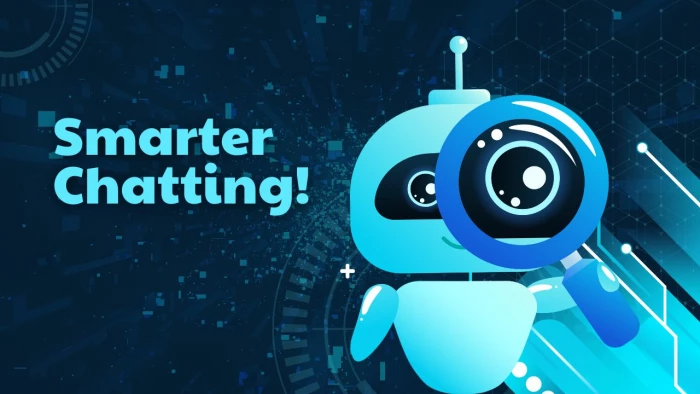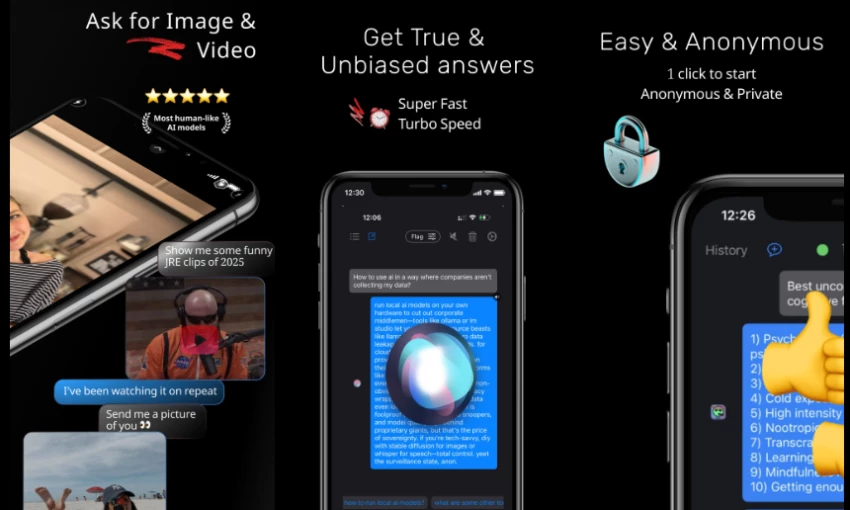

How filter-free chatbots are reshaping privacy, conversation, and the idea of freedom online.
Ever tried asking your favorite AI something sensitive, only to get the familiar, “I’m sorry, but I can’t answer that”?
That moment of frustration is exactly what gave rise to uncensored AI.
In plain terms, uncensored AI refers to systems built to operate without the heavy moderation layers of mainstream tools like ChatGPT or Gemini. These AIs allow open, sometimes controversial, conversation, covering everything from psychology and relationships to taboo topics and creative fiction.
But before jumping to conclusions, it’s worth asking why users want this.
People aren’t necessarily seeking chaos; they’re seeking authenticity. They want to express thoughts without worrying that a filter will interrupt mid-sentence.
This idea takes shape on Uncensored.com, which boldly calls itself “The #1f Uncensored AI.”
Right from the landing page, it sets a tone of simplicity: a dark, minimal interface and a single input bar inviting you to “describe how love feels.”
That prompt isn’t just cute—it’s symbolic. It signals a space where emotions, not filters, define conversation.
Building on that, the platform introduces features that go far beyond simple chat.
Highlights from the Website
Each feature aims to strip away the robotic feel of chatbots and make interaction feel real.
From here, it’s easy to see how Uncensored AI isn’t just about freedom of speech, it’s about restoring the humanity that filtered systems often lose.
Statistics add weight to the narrative:
1.5 million+ active users, 31 model iterations, and a 4.4-star App Store rating—not bad for a platform that avoids traditional marketing and moderation routes.
These numbers don’t just measure success; they mark an experiment in user-driven AI design. Each iteration refines how the AI understands nuance and context, suggesting that feedback loops replace censorship.
As these numbers rise, so do the questions, What exactly can users do with a system that’s this open? Let’s unpack that next.

Unlike standard AI chats limited to text, Uncensored brings multiple modes together:
This turns Uncensored AI into a small ecosystem where privacy meets versatility. You can use it for emotional support, creative brainstorming, quick research, or personal reflection.
But with such openness comes the next big question: how much freedom is too much?

Freedom online always sounds empowering, until we realize it can also expose us to misinformation or privacy risks.
That’s the fine line every uncensored AI platform walks.
Key Risks to Consider
Platforms like Venice AI and Dolphin 3 counter this by offering local or zero-logging setups, but responsibility still rests largely with the user.
Expert takeaway:
The real meaning of “uncensored” isn’t no rules, it’s self-moderation.
Developers are aware of this tension too, and they’re now designing APIs that blend privacy with accountability.
Hidden near the bottom of the Uncensored.com homepage is an interesting line:
“API in private beta now — offering chat completions, coding, and visual editing capabilities.”
This opens new doors for builders and researchers who want to integrate uncensored AI into custom workflows or creative tools.
The API hints at a future where anyone, not just corporations, can craft AI experiences shaped by their own boundaries.
And that naturally raises the question, if AI freedom is growing, how do users keep it safe and sustainable?
Every innovation creates its own learning curve.
Just like social media once challenged how we manage online speech, uncensored AI is testing how we handle digital autonomy.
To use it wisely:
Freedom in technology works best when balanced with empathy and awareness.
It’s not about avoiding uncomfortable topics; it’s about handling them responsibly.
Once users embrace that balance, the potential of uncensored AI becomes clearer, not chaotic, but empowering.
What is Chat Uncensored AI?
An AI chatbot platform allowing natural, unfiltered dialogue with options for media, voice, and multilingual interaction.
Is it open-source?
Not currently. It’s a private beta model under active development.
What can users do with it?
Chat, upload visuals, listen to voice responses, or test the upcoming API.
Are there any rules?
Fewer than traditional AI—but illegal, hateful, or harmful behavior remains off-limits.
Can I delete my account or chats?
Yes, directly through the FAQ’s “Delete My Account” section.
And with that, the bigger picture starts to form. Uncensored AI isn’t just another chatbot; it’s part of a larger shift in how we define digital trust.
Uncensored AI is less a rebellion and more a reflection.
It mirrors our collective desire for privacy, honesty, and autonomy in an increasingly filtered digital world.
As AI models get smarter, the debate won’t be about what they can say, but who decides what they can’t.
Platforms like Uncensored are early experiments in returning that decision to users themselves.
And that brings us full circle, because freedom in AI, like freedom in speech, only thrives when people use it with care.
Uncensored AI captures a powerful moment in tech history: a move away from polished automation toward raw, human-style intelligence.
It’s experimental, imperfect, and sometimes unpredictable, but that’s also what makes it real.
Whether you use it or simply observe it, Uncensored AI reminds us of one simple truth:
Digital freedom isn’t about breaking rules, it’s about learning how to use them wisely.
Be the first to post comment!